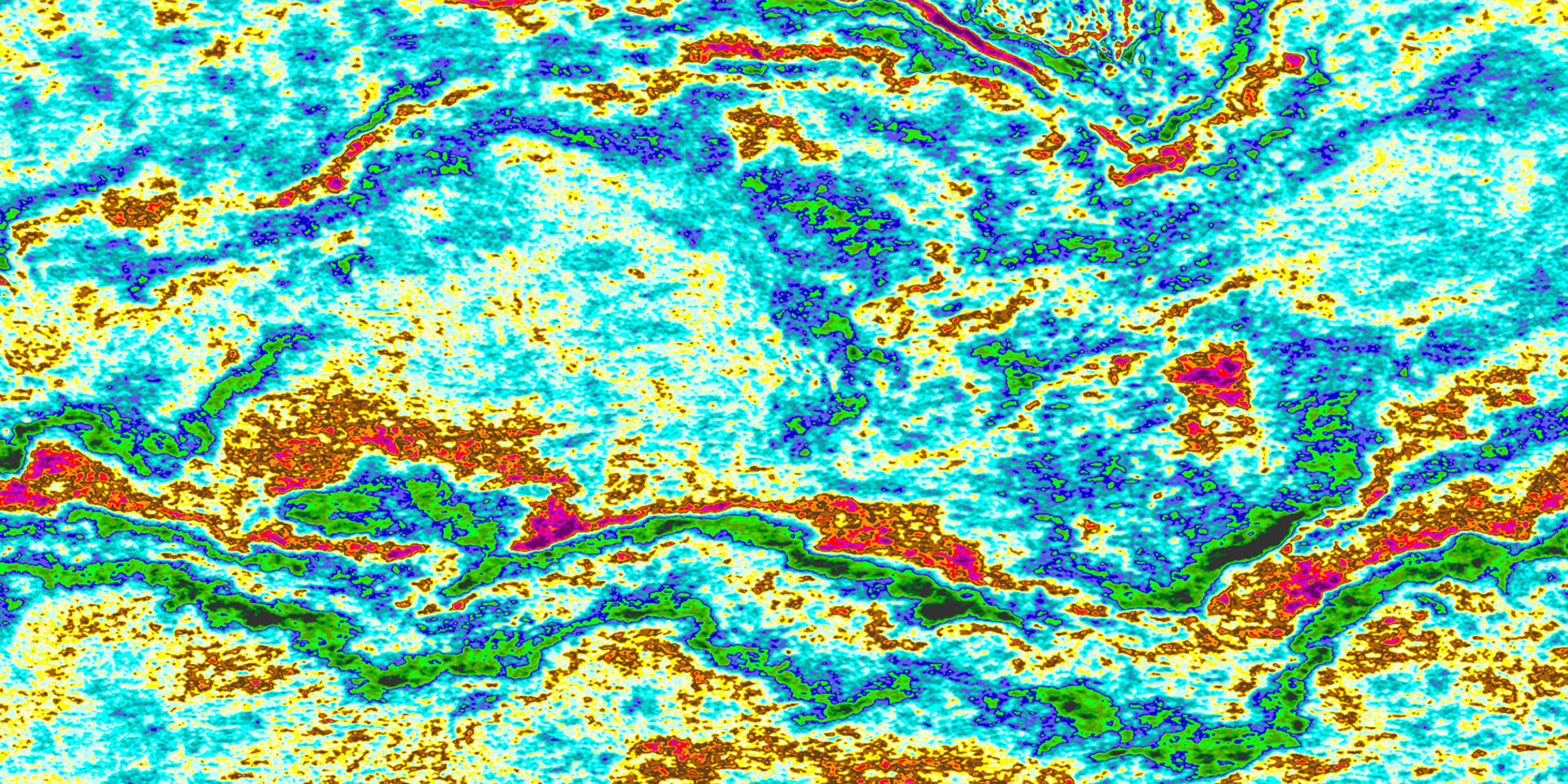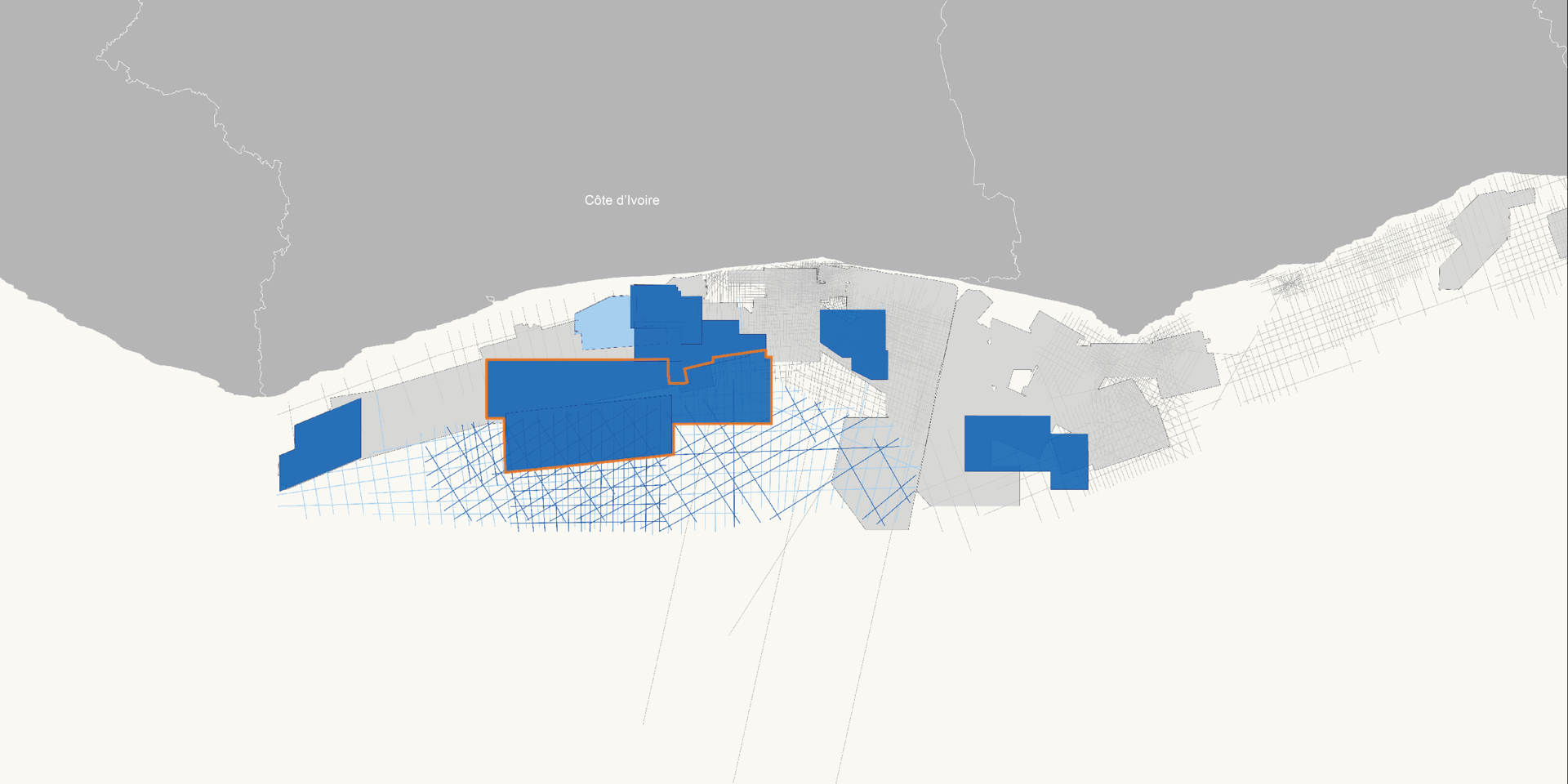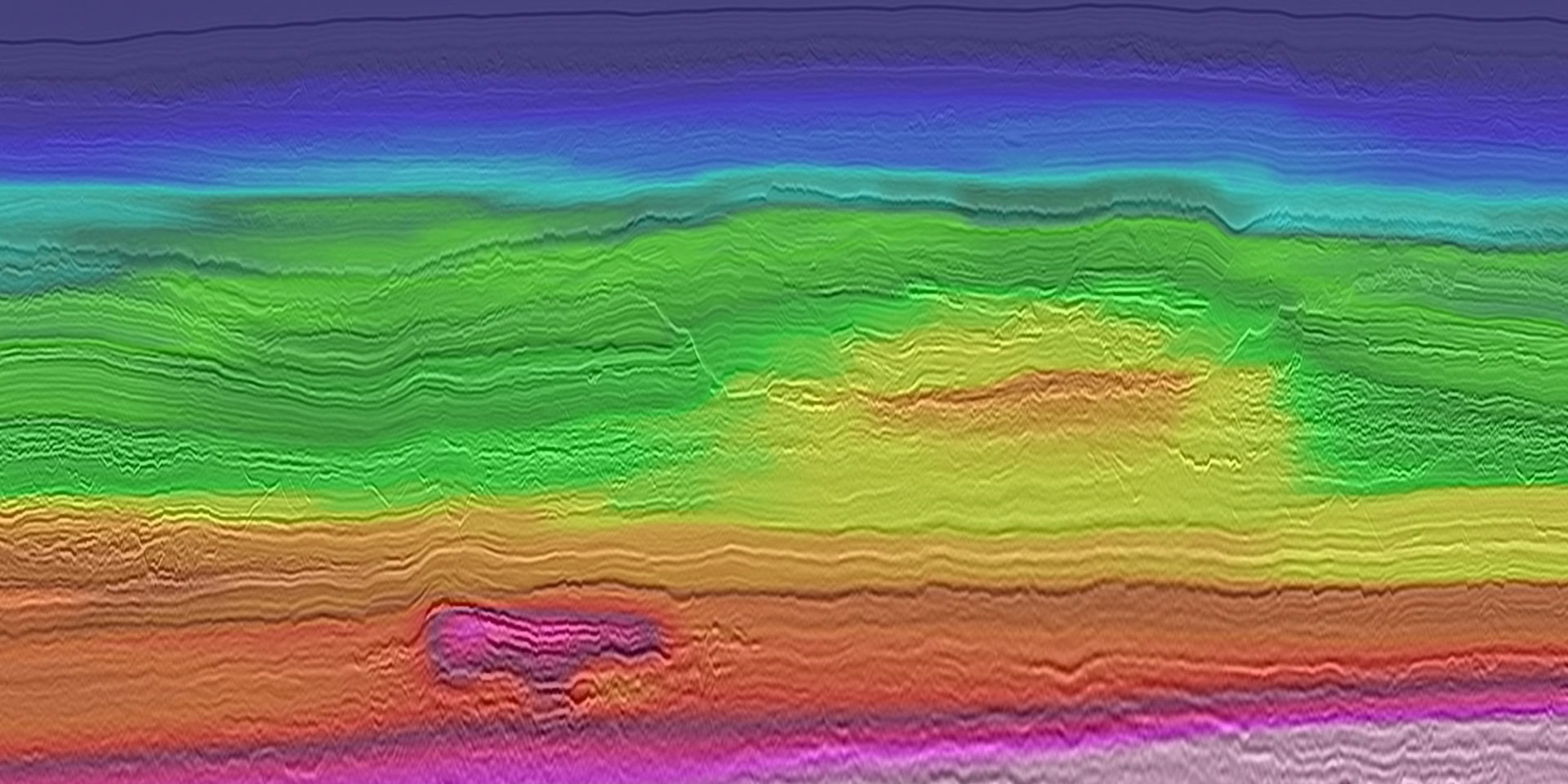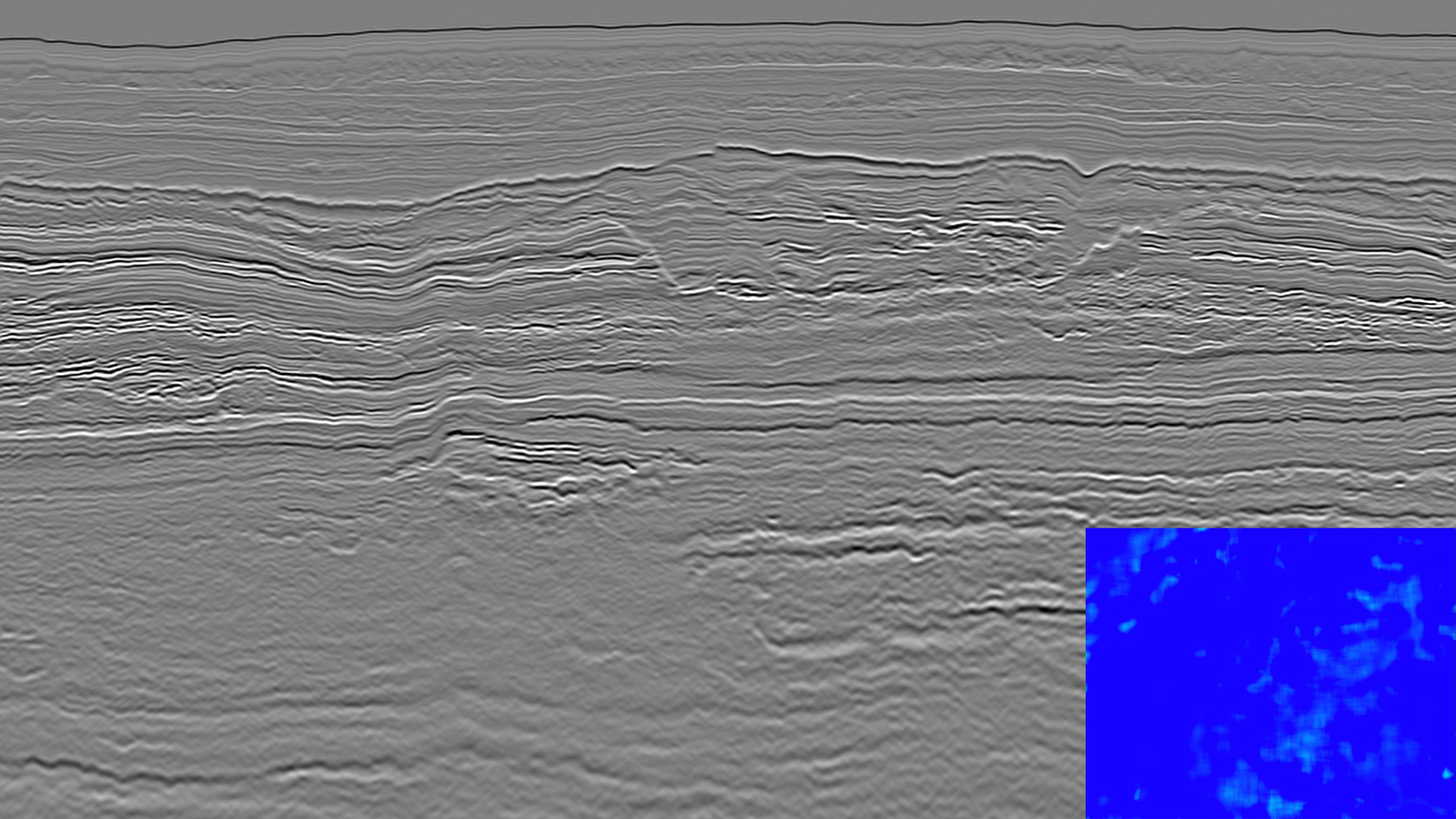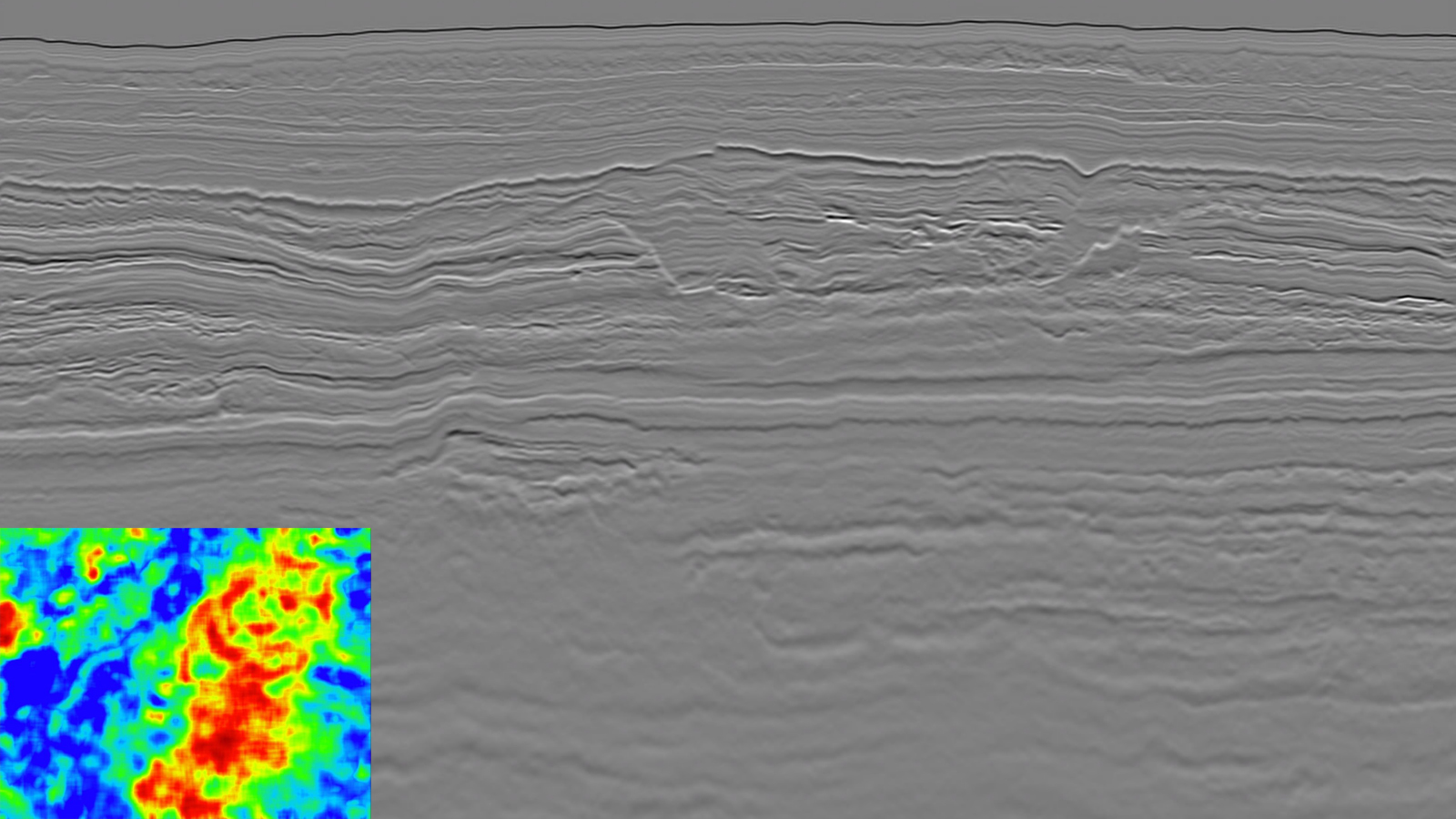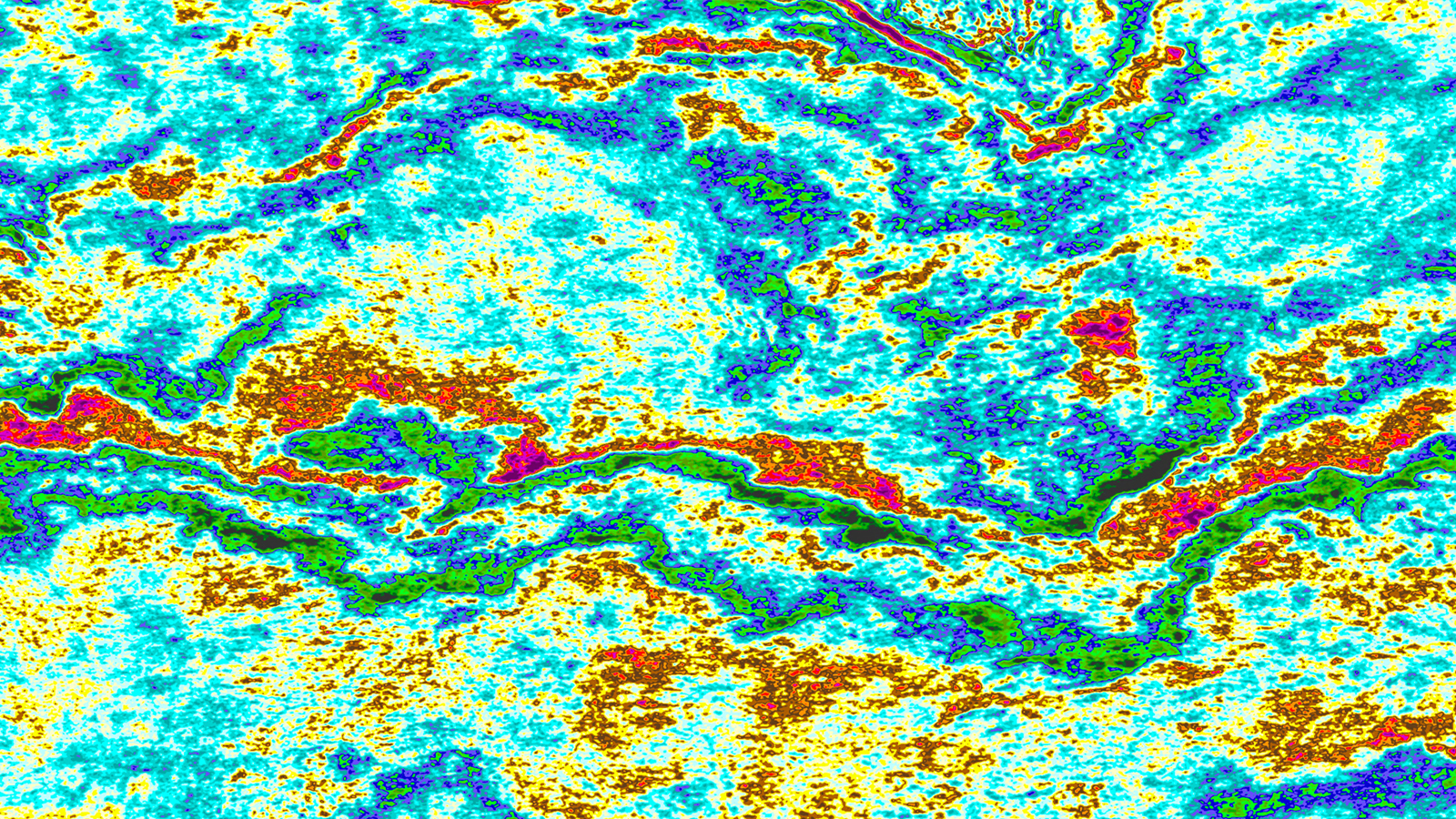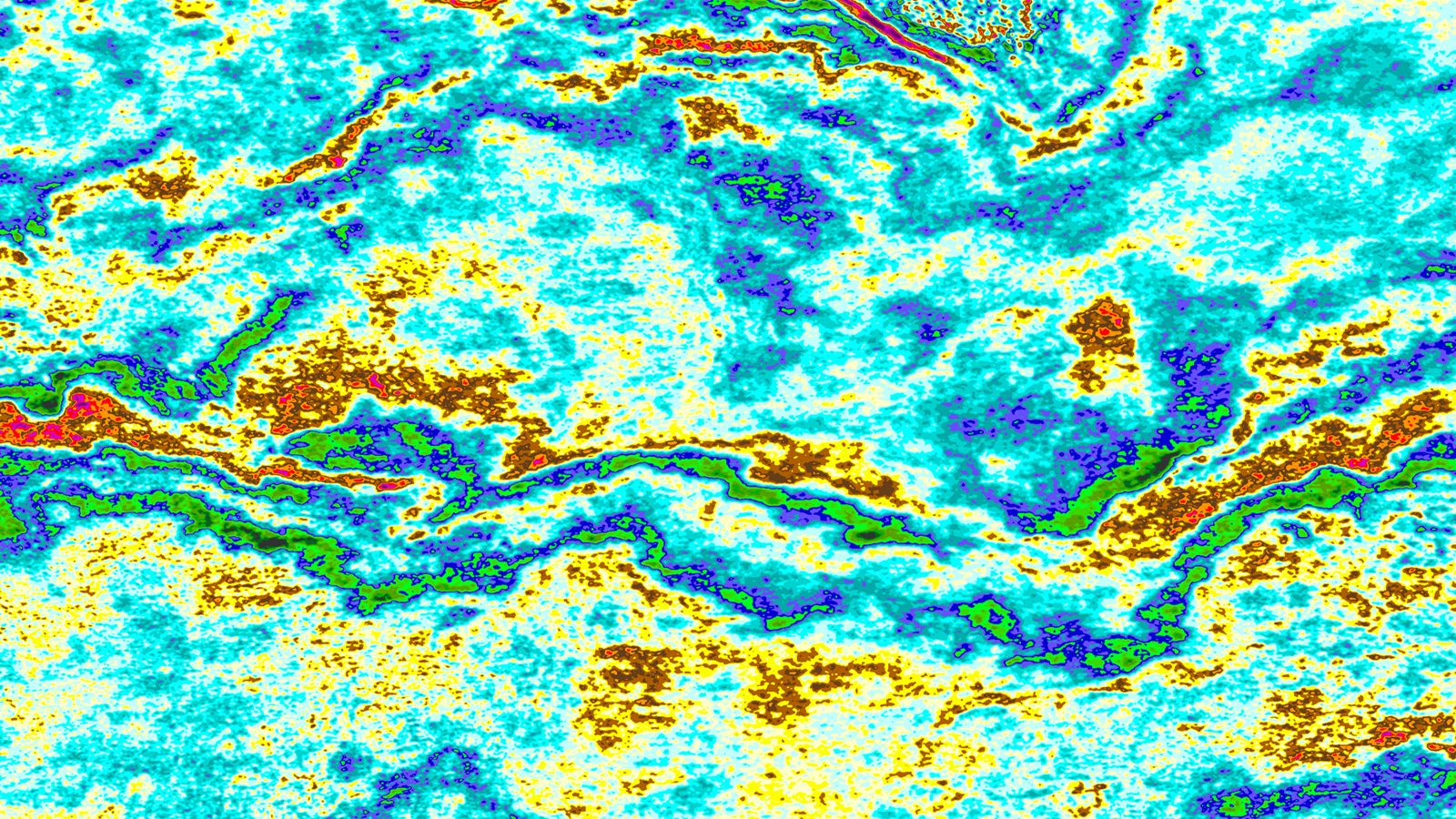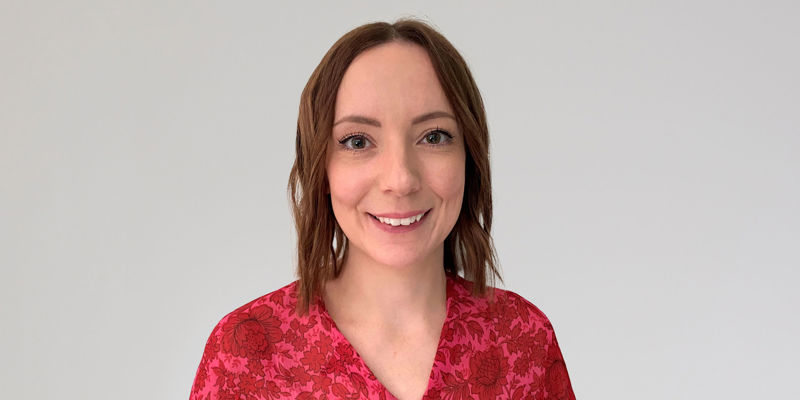Challenge
Late Cretaceous (Maastrichtian) and Paleocene channel and canyon systems (yellow ellipses) impact the seismic characterization of older Late Cretaceous prospective channel and fan systems in deepwater Côte d’Ivoire. Intra-channel heterogeneity affects amplitude fidelity and causes uncertainty for the prospective targets in the underlying older channel and fan systems. No wells have been drilled in deepwater Côte d’Ivoire, however with modern regional datasets available, the complex sediment provenance is becoming more understood.
